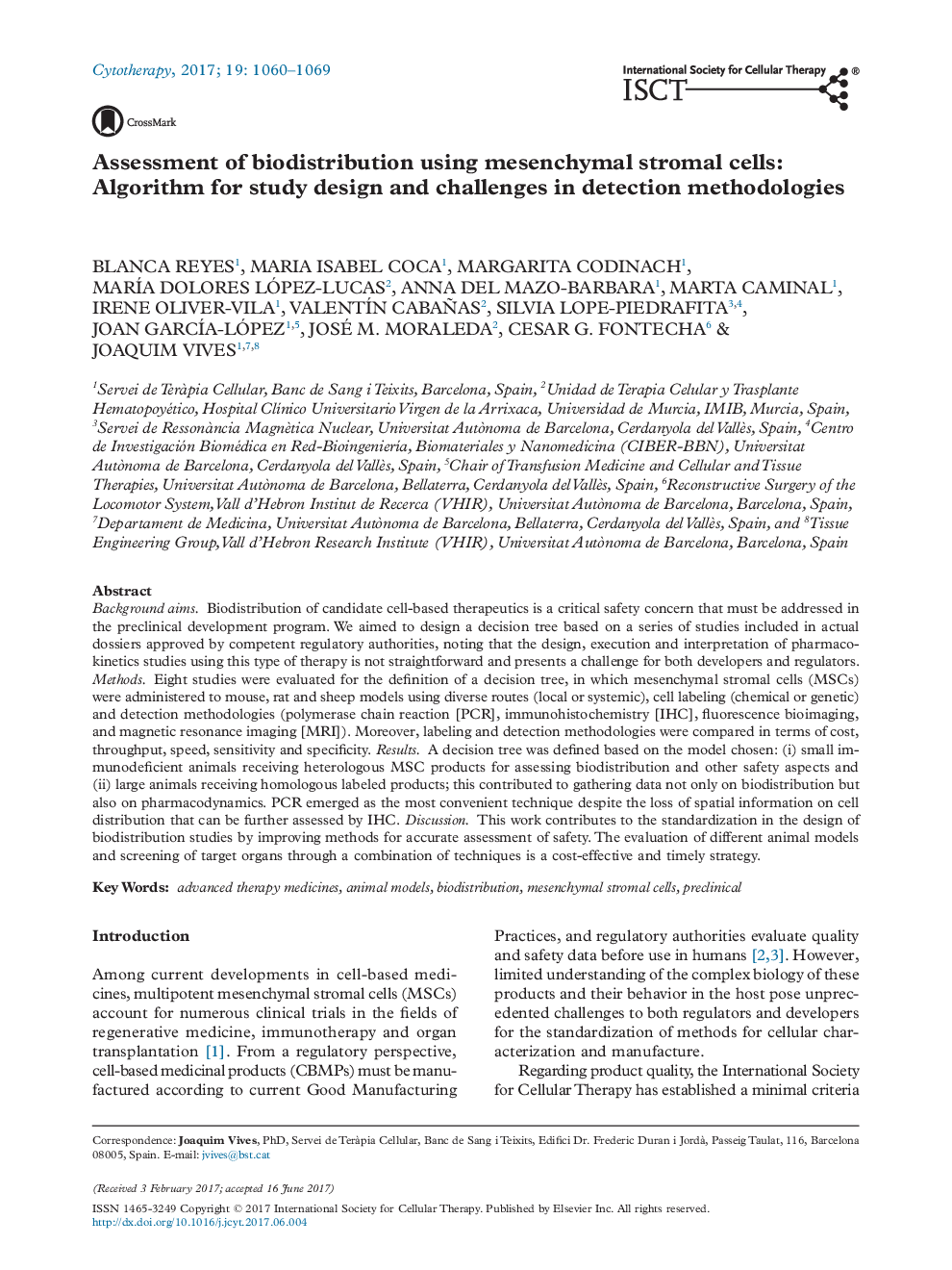| Article ID | Journal | Published Year | Pages | File Type |
|---|---|---|---|---|
| 5531318 | Cytotherapy | 2017 | 10 Pages |
Background aimsBiodistribution of candidate cell-based therapeutics is a critical safety concern that must be addressed in the preclinical development program. We aimed to design a decision tree based on a series of studies included in actual dossiers approved by competent regulatory authorities, noting that the design, execution and interpretation of pharmacokinetics studies using this type of therapy is not straightforward and presents a challenge for both developers and regulators.MethodsEight studies were evaluated for the definition of a decision tree, in which mesenchymal stromal cells (MSCs) were administered to mouse, rat and sheep models using diverse routes (local or systemic), cell labeling (chemical or genetic) and detection methodologies (polymerase chain reaction [PCR], immunohistochemistry [IHC], fluorescence bioimaging, and magnetic resonance imaging [MRI]). Moreover, labeling and detection methodologies were compared in terms of cost, throughput, speed, sensitivity and specificity.ResultsA decision tree was defined based on the model chosen: (i) small immunodeficient animals receiving heterologous MSC products for assessing biodistribution and other safety aspects and (ii) large animals receiving homologous labeled products; this contributed to gathering data not only on biodistribution but also on pharmacodynamics. PCR emerged as the most convenient technique despite the loss of spatial information on cell distribution that can be further assessed by IHC.DiscussionThis work contributes to the standardization in the design of biodistribution studies by improving methods for accurate assessment of safety. The evaluation of different animal models and screening of target organs through a combination of techniques is a cost-effective and timely strategy.
